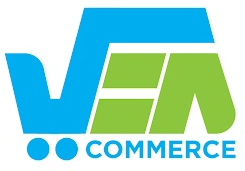
Ah, the allure of skipping ahead – it’s tempting, isn’t it? But when it comes to website development, taking shortcuts can come at a steep price. Today, we’re shining a light on the hidden costs of skipping the discovery phase and why it’s worth every penny to invest upfront. Let’s dive in!
The Illusion of Savings
Picture this: you’re eager to get your website up and running, so you decide to skip the discovery phase to save time and money. Sounds like a smart move, right? Wrong. While it may seem like you’re cutting costs in the short term, you’re actually setting yourself up for potential headaches and expenses down the line.
Unforeseen Challenges Await
Without the insights gained from the discovery phase, you’re essentially flying blind. What may seem like a straightforward project can quickly spiral out of control when unforeseen challenges arise. From scope creep to misaligned expectations, the costs of these setbacks can add up faster than you can say “website woes.”
Risk Management 101
Here’s the thing – investing in the discovery phase isn’t just about avoiding pitfalls; it’s about mitigating risk. By taking the time to thoroughly understand your business goals, audience needs, and technical requirements upfront, you’re laying the groundwork for a smoother, more successful website development journey.
Building a Solid Foundation
Think of the discovery phase as laying the foundation for your digital masterpiece. Without a solid foundation, your website is like a house of cards – one gust of wind and it all comes crashing down. But with a well-planned discovery phase, you’re building on solid ground, setting yourself up for long-term success.
Blog to Blueprint: Your Action Plan
Ready to turn insights into action? Here’s your personalized action plan to ensure you never skip the discovery phase again:
- Define Business Goals: Start by clearly defining your business goals and objectives. What do you hope to achieve with your website? Whether it’s increasing sales, improving brand awareness, or enhancing customer engagement, having clear goals will guide every decision in the discovery phase.
- Identify Target Audience: Get to know your audience inside and out. Conduct market research to understand their demographics, preferences, and pain points. By gaining a deep understanding of your target audience, you can tailor your website to meet their needs and preferences effectively.
- Conduct Competitor Analysis: Analyze your competitors’ websites to identify strengths, weaknesses, and opportunities. What are they doing well, and where do they fall short? Use this information to inform your own website strategy and find ways to differentiate yourself in the market.
- Create User Personas: Develop detailed user personas that represent different segments of your target audience. Consider factors such as age, gender, occupation, interests, and pain points. These personas will serve as a reference point throughout the website development process, ensuring that your website resonates with your target audience.
- Define Key Features and Functionality: Based on your business goals, target audience, and competitor analysis, identify the key features and functionality that your website needs to succeed. This could include e-commerce capabilities, lead generation forms, interactive elements, and more. Prioritize these features based on their importance to your overall objectives.
- Map Out User Journeys: Visualize the paths that users will take through your website to achieve their goals. Map out different user journeys for various personas, considering how they will navigate through your site and interact with different content and features. This will help you design a user-friendly website that guides users towards conversion.
- Content Strategy Development: Develop a comprehensive content strategy that aligns with your business goals and resonates with your target audience. Determine what type of content you need to create, where it will be published on your website, and how it will be optimized for search engines and user engagement.
- Technical Requirements Assessment: Assess the technical requirements needed to support your website’s features and functionality. Consider factors such as hosting, security, content management systems, and integration with third-party tools and platforms. Ensure that your technical infrastructure is robust enough to support your website’s needs now and in the future.
- Budget and Resource Planning: Determine the budget and resources needed to execute your website development project successfully. Consider factors such as design and development costs, ongoing maintenance and support, and internal resources required from your team. Allocate resources effectively to ensure that your project stays on track and within budget.
- Stakeholder Alignment and Communication: Ensure that all stakeholders are aligned on the project goals, objectives, and expectations. Maintain open and transparent communication throughout the discovery phase to keep everyone informed and engaged. Establish a clear feedback loop to address any concerns or changes as they arise.
